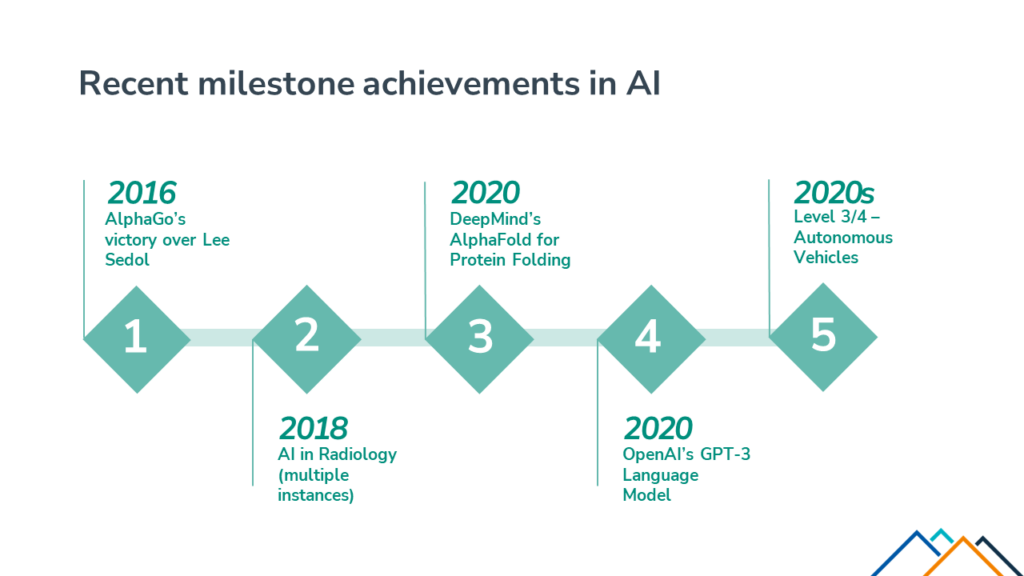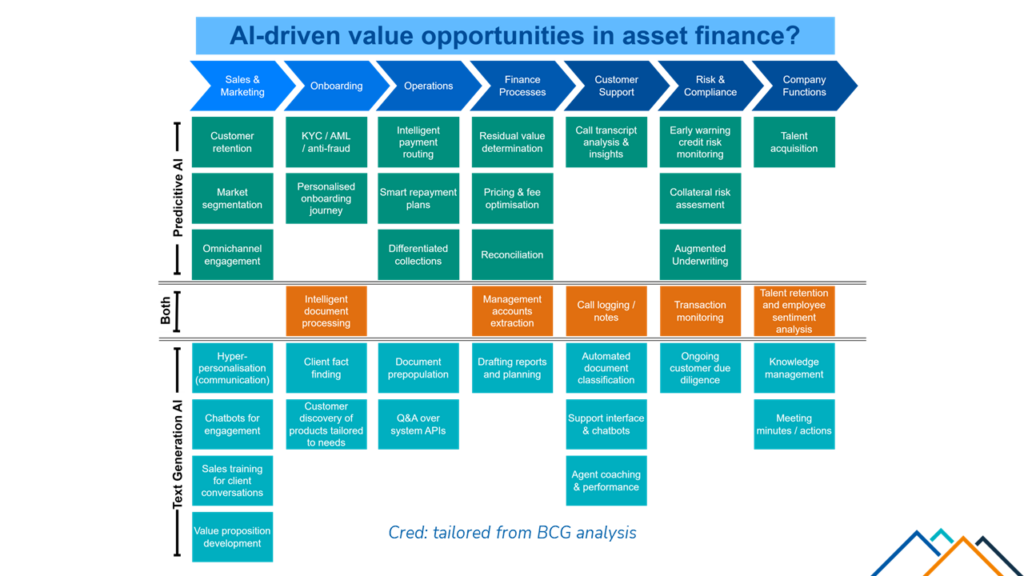Why asset finance brokers should get accredited by the FLA
Summary
During February’s Finance & Leasing Association (FLA) annual dinner, Chair John Phillipou announced the launch of a new broker accreditation scheme designed to drive through changes in the asset finance broker-lender channel that the FLA hopes will improve efficiency and increase both compliance and channel transparency.
The changes have been long planned but should be seen in the context of:
- large-scale customer-initiated fraud originated over some years through the broker-lender channel that was discovered in 2022;
- the focus by the FCA on intermediaries including worries about commission disclosure;
- the FCA’s recent intervention in relation to discretionary commission arrangements in auto finance; and
- possibly also concerns about rapid growth in the volume of business coming from new appointed representative brokers.
The FLA’s asset finance broker accreditation scheme is a key part of a wider effort to bring lenders and brokers closer together. It is believed that by establishing a forum through which lenders and brokers can agree how to better organise the channel, changes can be made effectively and through mutual consent.
The accreditation scheme is a first step and focuses on replacing multiple reviews (the process whereby a lender checks that the broker with whom they deal is compliant with relevant regulations and the lender’s own requirements) which are currently carried out individually by each lender on each of the brokers with whom they deal. Instead, it is intended that there will be a single broker review which will wholly or in part provide the same information for all lenders.
Asset Finance Connect (AFC) have found that the scheme has been met with scepticism by some brokers who have expressed doubts specifically about the value it delivers to them. Some brokers have raised worries that unless there is a common review requirement then the FLA review will only be one extra review among many and may add to their work.
However, during the recent AFC webcast focusing on the FLA broker accreditation scheme, a poll of brokers was conducted, and 44% of brokers believed that a single broker review which effectively meets most of the needs of lenders reducing the number and extent of reviews done individually by lenders will save brokers time and money (compared to just 8% who felt that it would not).
This is strong evidence that more brokers than not are in favour of the project.
The FLA scheme will evolve, according to Phillipou. And as it does it is expected to progressively deliver more value for both brokers and lenders. This may be enough to bring sceptical brokers on board.
The scheme is expected to cause lenders to move towards accepting a common review requirement which will address the concern that this is just an additional review and will hopefully deliver the intended value for brokers.
It is also hoped that the scheme will provide a common agreement about which actors in the channel fail to meet minimum requirements. It is feared that bad lenders (those who deal with bad brokers) and bad brokers (those who fail the accreditation process or have it withdrawn) bring the industry into disrepute, and increase the likelihood of damaging regulatory intervention.
Through its research during and after the webcast, AFC found a significant barrier to change to be the mistrust which is evident on both sides when lenders and brokers discuss how to change the way in which the channel operates. This mistrust extends also to the interaction between trade associations.
Some brokers have told AFC that they cannot see compelling value for them in the scheme. Many of these brokers feel that most of the value in the single review process will be derived by lenders. Other brokers accept that this is a starting point and see it as an opportunity for further discussion.
AFC also found a concern expressed by a few participants that the individual interaction between lenders and brokers builds understanding between individual lenders and brokers, and the scheme to delegate that interaction to a third party is counterproductive.
John Phillipou addressed this concern during the webcast pointing out that lenders will still have to have some direct and specific diligence of the broker (and demonstrate this to regulators), with the intention being to cover approximately 75%-85% of what is required with the FLA scheme.
Notwithstanding any concerns, there seems to be a common acceptance that without change there is at least a danger that the industry will repeat the experiences of auto finance providers and their dealer intermediaries.
Consensus and trust will make change easier.
This project appears to be one of several activities taking place in both associations which appear to be designed to build the consensus and trust which is a pre-requisite for making effective changes to the industry.
Webcast summary
Why now?
John Phillipou, Managing Director of SME Lending at Paragon Bank and chair of the FLA set the scene for the webcast.
The broker channel, he told attendees, has proven itself as an enormously effective channel for SMEs to access finance. As a result, many lenders’ businesses rely on it as an important route to market. But the organisation of the channel needs to change.
Phillipou referred to an “undercurrent of regulatory creep”. Lenders need to be able to show regulators (who may currently not even have responsibility for all of the sector) that their house is in order.
This became clear during the Covid pandemic when CBILS and British Business Bank support highlighted “linkage of responsibility” between funders and their intermediaries. This seems to mean that lenders are responsible for making sure the brokers with whom they deal are compliant.
Philipou also suggested that the current review of the Consumer Credit Act may change the definition which distinguishes regulated and unregulated business. Brokers who formerly operated outside regulation may not remain outside.
Phillipou suggested that regulators do not seem to fully understand the role and value of brokers in originating business. This view was held by most of the attendees. 95% of respondents polled in the webcast believed that regulators and policy makers fail to understand the benefits brokers provide for SMEs and the UK economy.
“The intention of the scheme is that we can pull together with the broker community and reflect that non-regulated business works perfectly well and that the asset finance industry has everything in order,” asserted Phillipou.
How does accreditation work?
Simon Goldie, Director of Business Finance & Advocacy at the FLA explained that the association is intervening now on behalf of lenders following a series of requests from FLA members who want them to provide a review for intermediaries on which all lenders can rely.
Goldie consulted with brokers to assess the benefits they would gain from the review.
He acknowledged that the FLA review will not necessarily replace lenders’ individual reviews but argued that it would reduce the extent of individual reviews.
The FLA review will operate using a digital portal where brokers can demonstrate they comply by answering questions online and submitting evidence.
Where a broker’s responses demonstrate a non-serious breach (Goldie used the example of compliance with privacy notices), the FLA will provide the broker with reasonable time to take the required action to remedy the breach before repeating the review process.
More serious breaches, either during or after accreditation (including complaints made by lenders) will be passed to an independent adjudication panel made up of people with relevant industry experience. The panel will determine if accreditation should be withheld or withdrawn.
In addition to providing a point of access for brokers to submit evidence of compliance, the portal will also provide FLA members with access to information about brokers which they can use to determine whether they wish to do business with them.
The accreditation service is voluntary for both brokers and FLA lenders. Lenders do not have to use an accredited broker and brokers do not have to be accredited.
Once accredited under the FLA scheme, brokers may join a ‘broker review working group’. This will provide a range of benefits including access to regulatory updates which Goldie said “is particularly important for brokers who are not members of any trade body. “
“We want to create a channel to speak to brokers and hear their concerns so we can feed that into our conversations with government and regulators.” he told attendees.
Costs and benefits
Brokers will pay an annual fee to be part of the broker scheme which will include the review. The review will be managed by a third-party independent assessment specialist, X VAS. The FLA justifies this one-side-of-the-channel-pays, asserting that the FLA has invested in the scheme using funds paid by lender members from their membership subscriptions.
To reassure brokers who felt they were paying for a review process which was formerly paid for by lenders themselves, Goldie said: “This is not just funder-led – we want to make sure there are tangible wins for brokers.”.
“This is not just a funder-led scheme – we want to make sure there are tangible wins for brokers.”
Simon Goldie
Benefits for brokers of the accreditation scheme include help with customers, as well as existing and new lenders to their panel.
The major benefit for brokers however is that the channel is preserved and protected, Mike Randall, CEO of Simply Asset Finance and a Board Member of the FLA added.
Randall said he was concerned about non-standard reviews carried out by some lenders.
Underlying this thought seems to be a worry that some lenders work with brokers who do not meet the high standards they should.
Broker concerns and involvement
David Foster, Managing Director at Anglo Scottish Asset Finance was the only broker on the panel. He believes that broker-lender collaboration is important; and also sees value in establishing a single audit process on which all lenders would rely.
He told delegates that, “brokers’ frustrations are centred around bureaucracy getting in the way of them doing their day-to-day jobs,” and if the scheme could help with that, it would be a benefit to brokers.
Foster is undecided about the value of the FLA broker accreditation scheme.
However, if other issues confronting the broker community including commission disclosure and lenders handing off risk to brokers could be overcome through a collaboration with lenders and brokers via the FLA accreditation process, then Foster noted that it could be “a sound offering and the way forward”.
Brokers wanted an assurance that the FLA will collaborate with them on the accreditation scheme.
Simon Goldie responded that the scheme is at the “start of the journey” and its aim is to find a process to work with brokers and their community to understand it better and to help it thrive. He confirmed that, “this project is about creating a forum where lenders, brokers, and the FLA can discuss, swap ideas and improve the good working of the industry”.
Goldie also said that the FLA wants to work with the NACFB.
What the future holds?
The FLA hope that the scheme will demonstrate to the regulator that the broker-lender channel is working effectively in asset finance, according to FLA’s Goldie.
John Phillipou believes that the FLA broker accreditation scheme will show the regulator that the asset finance non-regulated industry is “ahead of the game”.
“The FLA accreditation scheme is an opportunity to look forward and collaborate for the future.”
John Phillipou






